Quantitative Habitability SWG
Welcome to the NExSS Quantitative Habitability Science Working Group!
The NExSS team launched its Quantitative Habitability Science Working Group (QuantHab) in August 2020. It held a workshop in December 2020 with over hundred attendees, and continues its biweekly meetings. To join the SWG, please, contact Daniel Apai (apai@arizona.edu) or Denise Gose (gosed@email.arizona.edu).
Charge of the QuantHab Science Working Group
The assessment of planetary surface habitability is at the core of the search for life on exoplanets, but it remains a complex and poorly constrained problem. Constraints are now emerging, at an increasing pace, from observations and models of planet formation, planet evolution, stellar characterization, present-day atmospheric composition, as well as from exoplanet population statistics and specific, but necessarily incomplete and often uncertain information on the specific planet targeted. Future exoplanet characterization efforts will necessarily have to work with such incomplete information and an integrative approach will be key to correct quantitative and statistical interpretation of the potential surface habitability of given targets, also underpinning the interpretation of potential biosignatures. The multi-disciplinary exoplanet communities continue to make rapid progress on focused research, but integrating evidence – often statistical in nature – across disciplines and sub-fields remains a major challenge. NExSS is uniquely well positioned to provide a hub and conduit for such an integrative effort.
The QuantHab Science Working Group aims to accomplish the following goals:
- Establish efficient channels of communication for the relevant groups
- Identify and connect to existing resources and activities to avoid duplication and maximize efficiency
- Establish a centralized online hub to collect and organize relevant datasets, publications, links to groups
- Organize quarterly workshops focused on integrating quantitative knowledge on habitability
The EOS NExSS team will be able to provide logistical and organizational support for this effort for at least the years 2020 and 2021.
We foresee a review of the group’s work and achieved results in about 18 months after the launch of the effort to, if needed, adjust goals, scopes, organization, or format.
Research Groups and Major Projects
Tools and Resources
Genesis Database: The Genesis Database includes an extensive library of planetary systems with simulated formation and evolution histories, including accretion events, compositions, etc. The Genesis Database can be used to explore trends between individual planet properties (such as volatile content, mass) and system parameters; or to identify possible formationevolutionary pathways for individual exoplanet systems.
Mulders, O’Brien, Ciesla, Apai, Pascucci 2020 Astrophysical Journal
ATMOS: (GitHub) Source code used to calculate the habitable zone — an improved version of the code used in Kasting et al. (1993).
HITE: (GitHub) Code to estimate the likelihood that a planet is potentially habitable from transit data.
VPLANET: (GitHub) Open source software to simulate planetary evolution, coupling interiors to the galaxy.
Habitable Zone Gallery: Habitable zone information and figures for the known exoplanets with complete orbital solutions.
